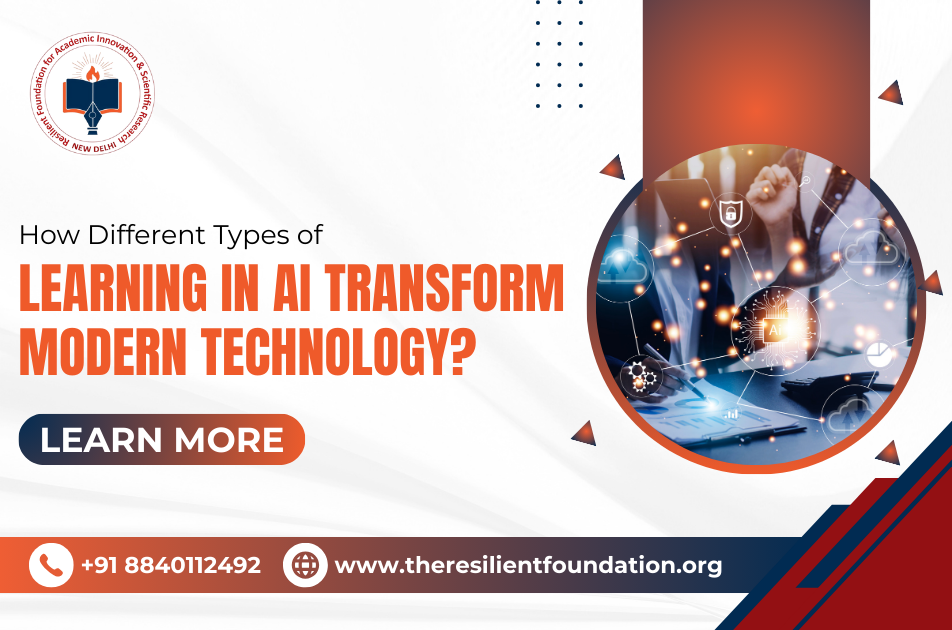Artificial intelligence is changing the way we live and work. From smart assistants on our phones to self-driving cars on our roads, AI is everywhere. But what makes AI so powerful is the way it learns. Thus, there are different types of learning in AI that allow machines to adapt, improve, and make better decisions. So, these learning methods transform modern technology and bring innovation to many industries.
Role of Supervised Learning in Transforming Modern Technology
Supervised learning is one of the most common methods in AI. In this type, machines learn from labelled data. Thus, it’s like teaching a child with examples and answers. Because of that, supervised learning is used in many real applications:
- Voice recognition: It helps your phone understand what you say.
- Email filtering: It separates spam from important emails.
- Medical diagnosis: Doctors use it to detect diseases from reports.
- Stock predictions: Companies use it to guess future market trends.
- Customer support: Chatbots learn to give correct replies.
With the help of an intelligent agent in AI, supervised learning supports real-time solutions that are fast and accurate.
How Unsupervised Learning Makes Technology Smarter?
Unsupervised learning is very different. Because it works without labelled data. So, machines find hidden patterns and structures on their own. Thus, this ability makes technology smarter in many ways:
- Market research: It groups customers with similar interests.
- Recommendation systems: Platforms suggest what you may like.
- Fraud detection: It spots unusual patterns in transactions.
- Data compression: It reduces storage by organising data better.
- Clustering of information: It groups large data into useful insights.
This type of learning is a core part of artificial intelligence training because it teaches systems to identify trends even without human input.
Reinforcement Learning and Its Role in Smart Machines
Reinforcement learning is all about rewards and actions. Here, machines learn by trial and error. So, if the machine takes the right action, it gets a reward. If wrong, it gets a penalty. Thus, this process is like how humans learn through experience. So here are some examples:
- Robotics: Robots learn to walk, grab, or carry objects.
- Gaming AI: Programs beat humans in chess or Go by practising millions of times.
- Traffic control: It manages signals to reduce congestion.
- Industrial automation: Machines adjust their actions for better results.
- Smart assistants: Devices learn how to improve user experience.
Because of that, reinforcement learning plays a big role in shaping advanced systems where an intelligent agent in AI continuously improves.
Importance of Semi-Supervised Learning in AI Development
Semi-supervised learning sits between supervised and unsupervised learning. It uses both labelled and unlabeled data. So, it reduces the cost of labelling large datasets and still improves accuracy. Thus, its importance can be seen in areas like:
- Healthcare: Identifying rare diseases with limited labelled data.
- Web content: Organising millions of unlabeled web pages.
- Speech recognition: Training voice assistants with small labelled samples.
- Image analysis: Sorting thousands of images quickly.
- Cybersecurity: Detecting risks from partial data.
For people who want to learn AI and machine learning, semi-supervised learning is an exciting method that connects theory with real-world impact.
Deep Learning and Neural Networks Driving Innovation
Deep learning is the advanced part of AI. Thus, it uses neural networks that act like the human brain. Because of that, it can process huge amounts of data and give amazing results. So, here are some ways it drives innovation:
- Image recognition: Identifies objects, faces, and even emotions.
- Natural language processing: Powers translation apps and chatbots.
- Autonomous vehicles: Help cars recognise roads, signs, and people.
- Medical research: Finds new drugs and treatments.
- Smart devices: Improves accuracy in home gadgets like speakers or cameras.
This method is often taught in AI workshops India, where learners explore neural networks and how they improve industries.
Real-World Impact of Different Types of Learning in AI on Technology
The different types of learning in AI have real effects on modern technology. Because of that, industries are changing faster than ever. So, here are some real-world impacts:
- Healthcare: AI helps doctors detect diseases and save lives.
- Education: Students use AI tutors for better learning.
- Finance: Banks use AI to stop fraud and predict trends.
- Retail: Personalised shopping makes customers happy.
- Environment: AI tracks climate change and supports sustainability.
At Resilient Foundation, we believe in using these methods to create a future where technology is smart, ethical, and helpful for everyone. So we focus on artificial intelligence training and different types of learning in AI to encourage learners to join AI workshops India to gain skills. Yet if you want to grow and learn AI and machine learning, Thus, Resilient Foundation offers guidance, training, and real-world insights that prepare you for tomorrow.

